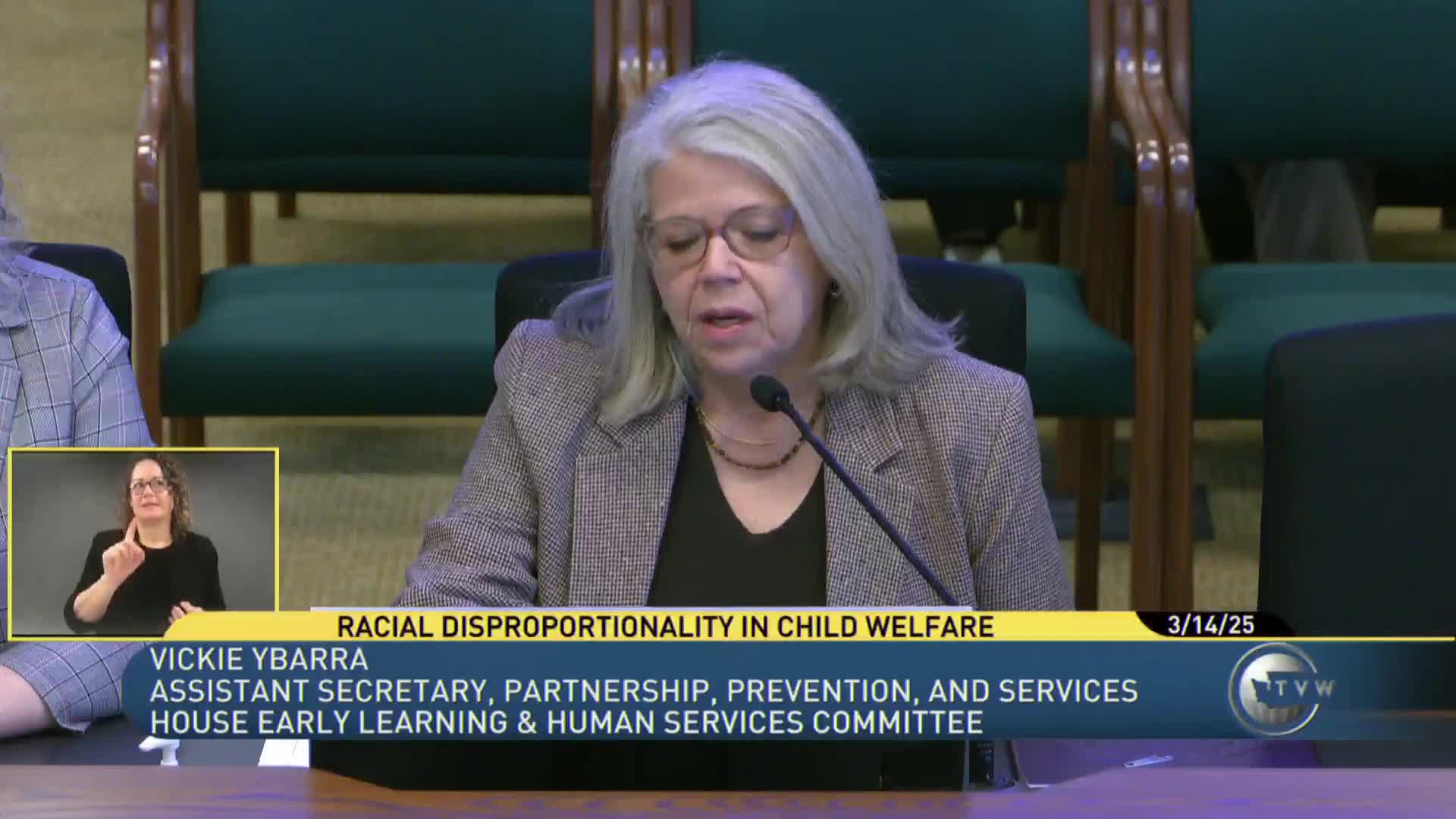Washington State DCYF discusses racial disproportionality in child welfare system
March 14, 2025 | Human Services, Youth, & Early Learning, House of Representatives, Legislative Sessions, Washington
This article was created by AI summarizing key points discussed. AI makes mistakes, so for full details and context, please refer to the video of the full meeting. Please report any errors so we can fix them. Report an error »

The House Early Learning & Human Services Committee convened at 8:00 AM on March 14, 2025, to address the pressing issue of racial disproportionality in child welfare systems in Washington State. The meeting focused on understanding the disparities faced by various racial and ethnic groups within the Department of Children, Youth, and Families (DCYF) and the measures being taken to address these inequities.
The session began with a presentation outlining the concept of racial disproportionality, defined as the overrepresentation or underrepresentation of a racial or ethnic group compared to its percentage in the total population. The presenters emphasized the importance of using statistical analysis to understand these disparities, particularly highlighting that Native American and Black children are disproportionately represented in the child welfare system.
The discussion then shifted to the causes of disproportionality, which include social determinants such as poverty and systemic biases in reporting and assessment processes. The presenters noted that a significant portion of disproportionality—70% for Native American and Alaska Native youth and nearly 90% for Black youth—occurs at the point of intake into the system. This finding underscores the need for targeted interventions at this critical stage.
Data presented during the meeting revealed that poverty is closely correlated with child welfare involvement. The committee learned that as child poverty rates decrease, so do the rates of children entering out-of-home care. The presenters highlighted that while economic supports alone may not eliminate disproportionality, they are a powerful tool in mitigating its effects.
Progress was noted in the reduction of disproportionality over the past five years, with fewer Native American and Black children entering out-of-home care. The presenters attributed this improvement to both agency efforts and broader societal changes aimed at reducing childhood poverty.
The meeting also addressed the agency's initiatives to implement best practices, including a focus on kinship placements, which have shown no significant disproportionality. The presenters discussed the importance of culturally specific prevention services and the need for ongoing evaluation of these programs to ensure they meet community needs effectively.
Committee members engaged in a robust discussion, asking questions about the effectiveness of family resource centers, the assessment tools used in child welfare, and the potential for further improvements in addressing racial disproportionality. The presenters acknowledged the ongoing challenges and the need for continued collaboration and community engagement to foster equitable outcomes for all children in the system.
In conclusion, the meeting highlighted the DCYF's commitment to addressing racial disproportionality through data-driven strategies and community-focused interventions. The committee expressed a desire for ongoing dialogue and support to ensure that progress continues in creating a more equitable child welfare system in Washington State.
The session began with a presentation outlining the concept of racial disproportionality, defined as the overrepresentation or underrepresentation of a racial or ethnic group compared to its percentage in the total population. The presenters emphasized the importance of using statistical analysis to understand these disparities, particularly highlighting that Native American and Black children are disproportionately represented in the child welfare system.
The discussion then shifted to the causes of disproportionality, which include social determinants such as poverty and systemic biases in reporting and assessment processes. The presenters noted that a significant portion of disproportionality—70% for Native American and Alaska Native youth and nearly 90% for Black youth—occurs at the point of intake into the system. This finding underscores the need for targeted interventions at this critical stage.
Data presented during the meeting revealed that poverty is closely correlated with child welfare involvement. The committee learned that as child poverty rates decrease, so do the rates of children entering out-of-home care. The presenters highlighted that while economic supports alone may not eliminate disproportionality, they are a powerful tool in mitigating its effects.
Progress was noted in the reduction of disproportionality over the past five years, with fewer Native American and Black children entering out-of-home care. The presenters attributed this improvement to both agency efforts and broader societal changes aimed at reducing childhood poverty.
The meeting also addressed the agency's initiatives to implement best practices, including a focus on kinship placements, which have shown no significant disproportionality. The presenters discussed the importance of culturally specific prevention services and the need for ongoing evaluation of these programs to ensure they meet community needs effectively.
Committee members engaged in a robust discussion, asking questions about the effectiveness of family resource centers, the assessment tools used in child welfare, and the potential for further improvements in addressing racial disproportionality. The presenters acknowledged the ongoing challenges and the need for continued collaboration and community engagement to foster equitable outcomes for all children in the system.
In conclusion, the meeting highlighted the DCYF's commitment to addressing racial disproportionality through data-driven strategies and community-focused interventions. The committee expressed a desire for ongoing dialogue and support to ensure that progress continues in creating a more equitable child welfare system in Washington State.
View full meeting
This article is based on a recent meeting—watch the full video and explore the complete transcript for deeper insights into the discussion.
View full meeting
